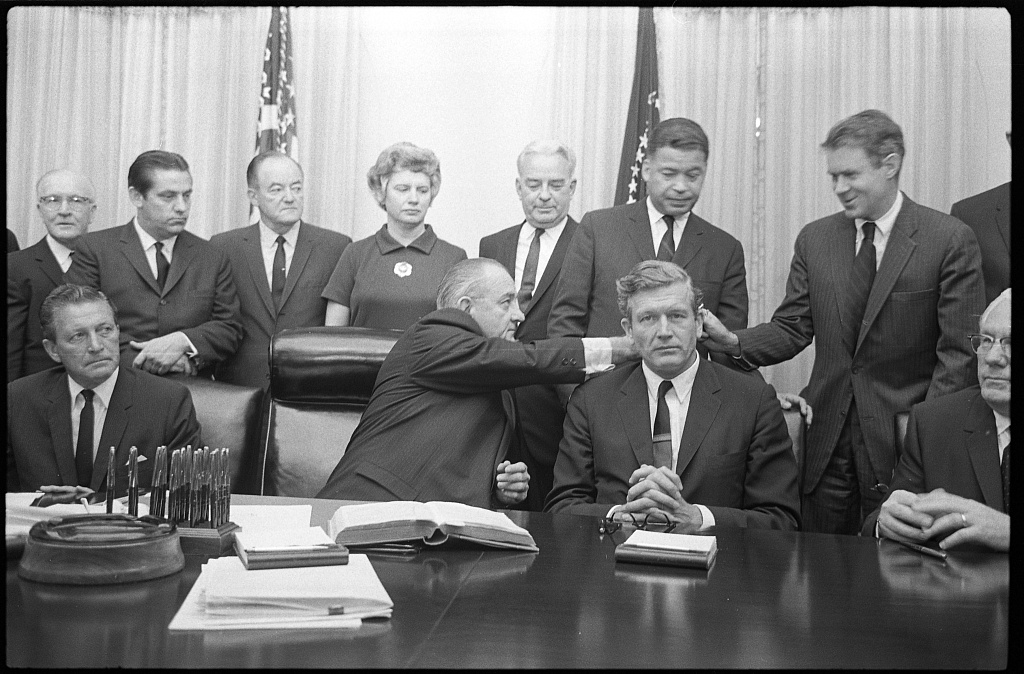Sign up for the daily CJR newsletter.
America’s alarming disunion is evident any time you turn on the news or read the paper. But a recent survey commissioned by the Ford Foundation indicates that our disconnect goes beyond our political disagreements—that our division may be exacerbated by the makeup of our media.
The survey’s primary goal was to analyze coverage of race in American news media, and to understand how different segments of the population perceive that coverage. We learned that perceptions differ widely between communities. When asked how African Americans are portrayed in the media, for example, 62 percent of African-American respondents answered that coverage is more negative than reality, while only 46 percent of white respondents believed that to be the case. When asked whether “the media makes race relations seem worse than they are,” 59 percent of white respondents agreed, compared to 37 percent of African-American respondents.
TRENDING: How hacked emails and a yacht in Monaco ended my career at WSJ
In other words, people who are underrepresented in the media have a very different view of its coverage than people who are overrepresented. And there are consequences. Both African-American and Hispanic respondents believed white communities are portrayed more positively than reality—while only a little over a quarter of white people surveyed agreed.
These results make sense, given what we know about American newsrooms. According to a 2017 survey conducted by the American Society of News Editors, a mere one out of six American newsroom employees are racial minorities—a minor decline from 2016. Meanwhile, data from the Radio Television Digital News Association reveals that the percentage of people of color in this country has increased by more than 12 percent over the past 27 years, yet during that time, American television news only became 6.6 percent more diverse—and radio less than 1 percent more so.
But Americans aren’t divided on all fronts. In every racial group surveyed—including half of white respondents—most people believed that hiring more minorities would improve the quality of news.
RELATED: Covering a country where race is everywhere
Of course, the problem of representation in media is hardly limited to racial minorities. There are many other groups that look to journalism to hold up the mirror to society, and don’t see themselves or their experiences reflected. When rural or working-class communities do not see or hear their struggles reflected in elite East Coast media, it’s easy to understand why they might dismiss the press as biased. It doesn’t help that local journalism—which covers the issues closest to people’s lives—has been consistently suffocated by economic pressures.
What’s more, we cannot afford to presume that the gap between what communities see in the media and what they experience is closing—or that it will get better by itself. In fact, this week marks the 50th anniversary of perhaps one of the clearest and most famous warnings that our media was worsening our cultural divisions—and that persistent and pervasive inequality had permeated the press and our society.
In February of 1968, President Lyndon B. Johnson’s National Advisory Commission on Civil Disorders issued the Kerner Report—which detailed an extensive and daunting list of inequalities and inequities that led to civil unrest in Detroit, Chicago, Los Angeles, and Newark. “Our nation is moving toward two societies,” the blue-ribbon panel concluded. “One black, one white—separate and unequal.”
Among its findings, the commission highlighted how the lack of adequate representation among the people assigning, reporting, and editing media coverage might drive “the underlying problems of race relations.” White readers were not informed about the problems facing black communities and remained unaware of their struggle. The commission suggested that greater representation might ameliorate this problem and provide more equal coverage.
In every racial group surveyed, most people believed that hiring more minorities would improve the quality of news.
This recommendation came alongside others that addressed unjust police practices, unemployment, underemployment, and inadequate housing. Sadly, these recommendations went largely ignored. The issue of media representation was one point in a broader constellation of institutions necessary to preserve democracy. Even though some improvements were attempted after the Kerner Report, progress in many of these areas has largely stalled, if not reversed.
As a nation, we must recommit ourselves to the lessons of the Kerner Report, and to building a media that reflects the whole of America—not one that divides and only reinforces one side or another. We must advocate for the hiring and promotion of journalists who represent the full American experience, and also for the creation of and support for local journalism that holds the powerful to account.
As news viewers, listeners, readers, and consumers, we must push media companies to be more transparent about the makeup of their staffs, and work to hold them accountable on issues of diversity, inclusion, and harassment. And we must also recognize the ways in which a healthy, thriving, independent media is necessary for the survival of our democracy, and do our best to preserve both.
We cannot allow another 50 years to pass before addressing the inequalities that eat away at our media, and America as a whole. Together, we must ensure that the people who understand the problems facing all communities have a voice in solving them, and news platforms that reflect their views. In the meantime, we, collectively, will keep speaking truth to power—until the powerful in media and Washington start telling more of our truth.
RELATED: Lessons on covering race and racism after Charlottesville
Has America ever needed a media defender more than now? Help us by joining CJR today.







